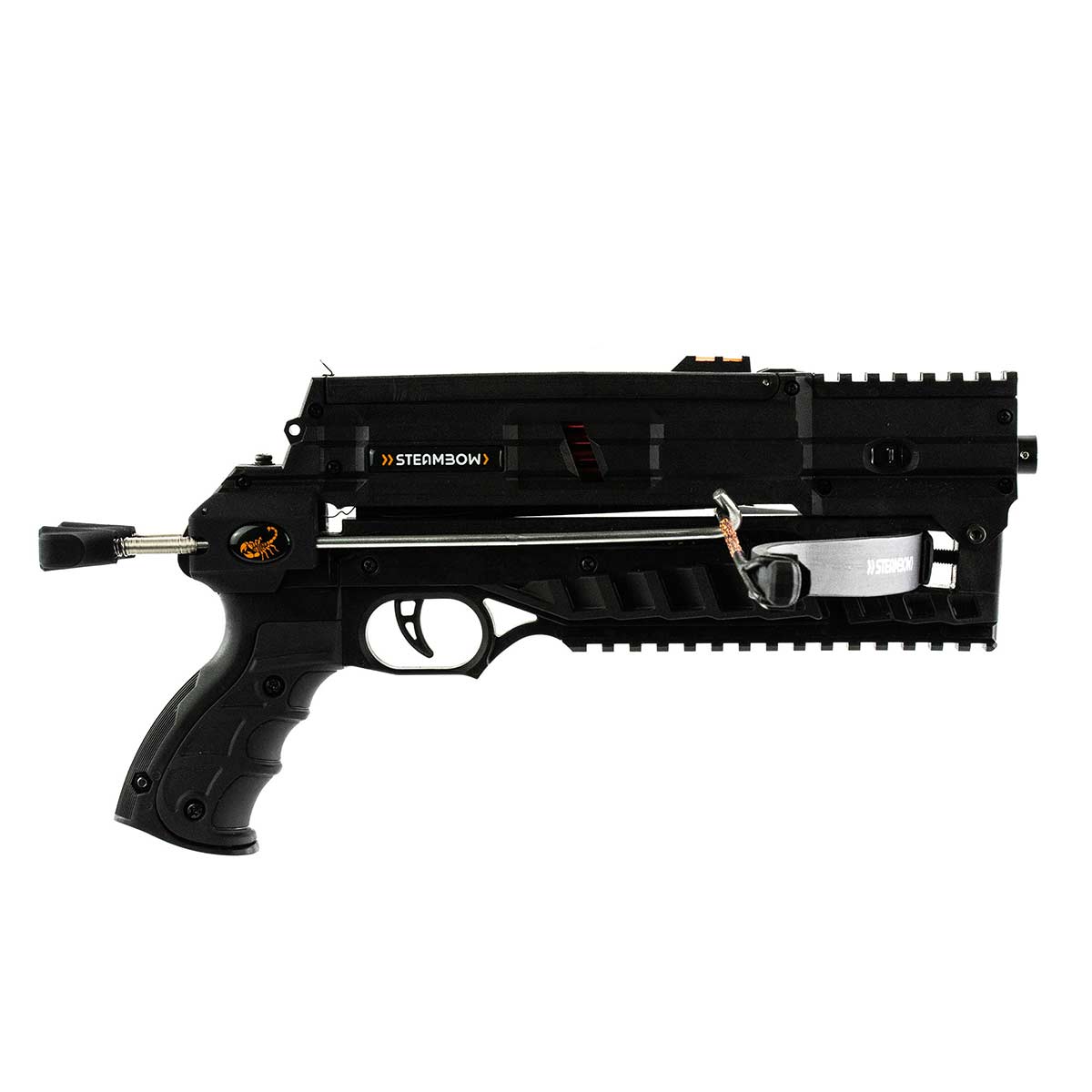
This blog will give you an overview of the different types of crossbows out there and, with that, an idea of why we went for the designs we uses today on our line of AR-6 Stinger II lever action crossbows, but the likes our full-size Onyx PowerUnit crossbow.
What makes a crossbow?
Traditionally, crossbows were simply a bow orientated horizontally across a frame that took the tension of the bow and supported the arrow. Crossbows appeared about 2400 years ago, so they have been around for quite a while. That initial design still exists today and remains a favorite with certain brands.
Modern crossbow offerings have a limb shape where the ends curve away from the archer. Imagine the stereotypical shape of Cupid’s bow, and there you have it. This shape gives the design its name: the recurve bow. This is also the limb shape used by our entire AR-6 Stinger II range of repeating pistol crossbows.
Recurve crossbows are simpler in design: they have fewer parts, meaning fewer problems. However, as we will discuss, they are not the most efficient; they tend to be louder, and they are probably the bulkiest designs.
Ancient design, modern improvements
In the late 1960s, a patent was granted for a new kind of bow that used pulleys (known for centuries to be force multipliers). In addition to the cams, there are also control cables that set the rate of turn of the cams.
The mechanical advantage this design offered meant that the archer could draw a higher draw weight for a given amount of energy exerted than they could with a conventional bow. Therefore, it was not long before this technology reached the crossbow market, too.
This means that, for a given draw weight, a compound bow produce greater energy release than a recurve bow. In addition, they tend to be quieter, and the use of cams means you can get away with shorter limbs for the same draw weight, making them easier to maneuver. The downside is that the system is more complex, meaning more to go wrong, more to tune and align, and more money to produce. All this applies to vertical and crossbows.
Exploring the possibilities
The evolution of the compound design has come in the form of new limb technology, new cam profiles, and designs, but also limb orientation. And this is where crossbows have undergone change not seen in the vertical bow market.
If you pull on a crossbow string, the limbs will flex. On a recurve or compound bow, the limbs curve back, and the string runs between them. Pull the string, and it will move away from the midpoint of the limb assembly (the riser). But some manufacturers do it differently.
Instead of the cams being closer to the archer than the limb midpoint, they mounted the limbs the opposite way. Midpoint closer, and cams further. Pulling the string means moving it toward the midpoint of the limbs and then past it until it reaches the latch.
This means the bow can be far narrower than other designs, and the power stroke (the distance over which the string propels the arrow) can be longer, too: more compact and more powerful for the same draw weight. As always, there’s a trade-off. Those advantages come at an even higher production price and greater complexity.
Our choice
So, with all these options for greater performance, why have we gone with the recurve for our popular AR-6 Stinger II? Our philosophy, when it comes to product development, is certainly guided by high-quality engineering and materials, but also an additional dimension: does it solve a problem? Does it do a job, and what is needed to do that job? Our Stingers may well be a barrel of fun, but they are also weapons, and weapons are tools.
And so, for a pistol crossbow designed to be ultra-reliable and light? Do you need something simple or complex? Simple, obviously. The recurve design does that.
For a repeating crossbow pistol designed to shoot out to thirty or so meters (or further if using higher draw weights), do you need the extra energy efficiency more than you need the lightweight and reliable design described above? Probably not.
For a design that offers easy, tool-free assembly and take down in the field, do you want a limb and a single string to contend with, or a split-limb design with cams in the middle and three strings running back and forth? Again, the simpler option wins.
So there you have it, there’s a short crash course on the main types of crossbow designs, where our AR-6 Stinger II fits in that range, and why. If you want a super reliable, accurate, lightweight, and fun repeating crossbow, now’s the time to look at our webshop.




